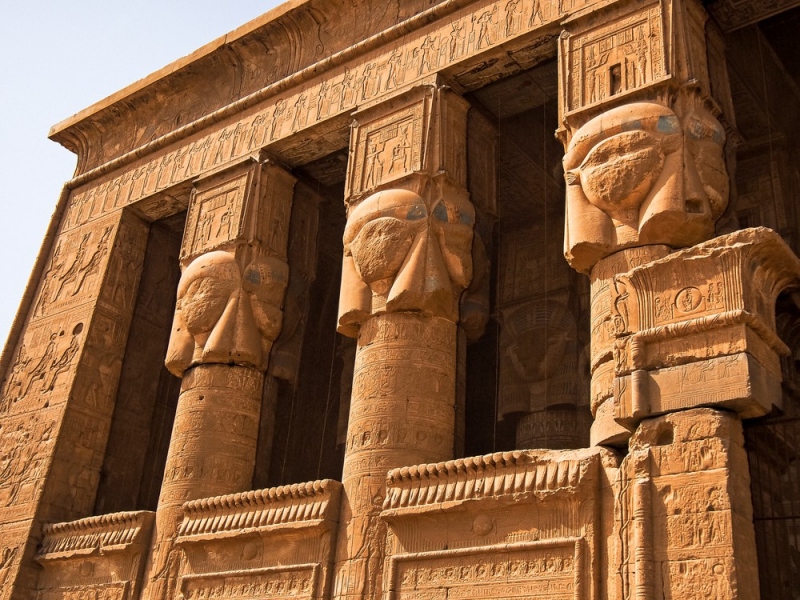Dendera
Dendera's temple complex is fairly big, with a basilica, two birth homes, a sacred lake, and several smaller temples and shrines. The structures at the site date from many ancient Egyptian eras, including the Middle Kingdom, the Ptolemaic Era, and the time of Roman provincial authority.
The first building on the site was constructed approximately 2250 BCE, although the remaining constructions date largely from the Ptolemaic era forward. Construction of the Mentuhotep II monument, the oldest surviving building when the site was uncovered, most likely began about 1995 BCE. The Mentuhotep statue was later relocated to Cairo. The earliest building still standing was erected around 345 BCE by Nectanebo II. All of this is to imply that the building as we know it began around 54 BCE, when construction on the Temple of Hathor, the most prominent edifice at the Dendera complex, began. The Temple of Hathor is one of Egypt's best-preserved ancient monuments, and it's a great example of classic Pharaonic architecture. The Temple of Hathor was mostly constructed during the Ptolemaic Dynasty, a time of Greek control in Egypt. The temple, however, was finished under the Roman emperor Trajan, who is pictured on the complex's walls giving sacrifices to Hathor. The temple complex also features a massive doorway built by Trajan and Domitian, another Roman emperor.
This location was a hub for the Hathor cult. During a period known as the Happy Reunion, Hathor was said to go from her temple in Dendera to spend time with her husband, Horus, at his temple in Edfu. This "reunion" took place once a year, and the return of Hathor to Dendera was supposed to mark the formal start of the Nile's flood season.
Location: Dendera












